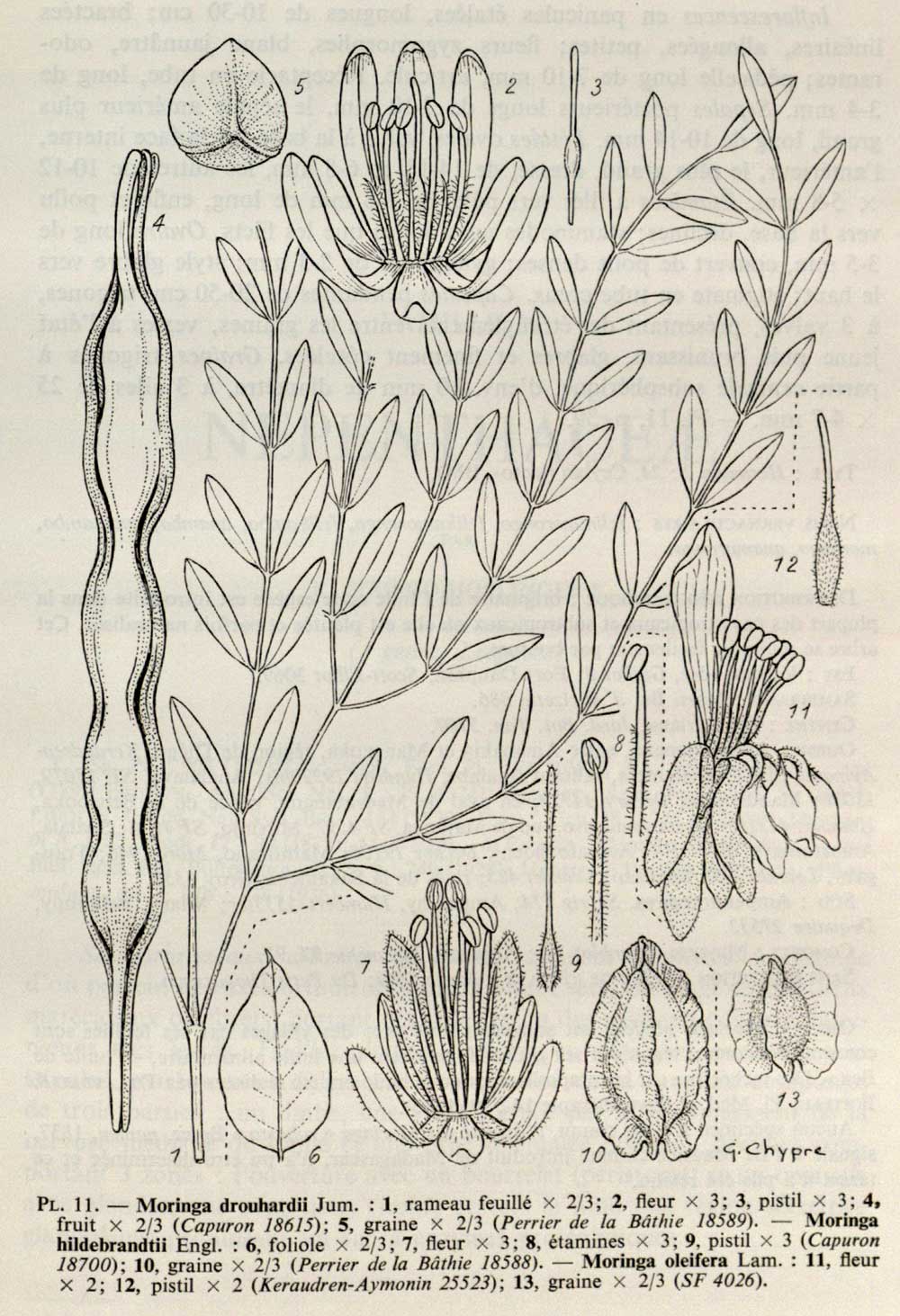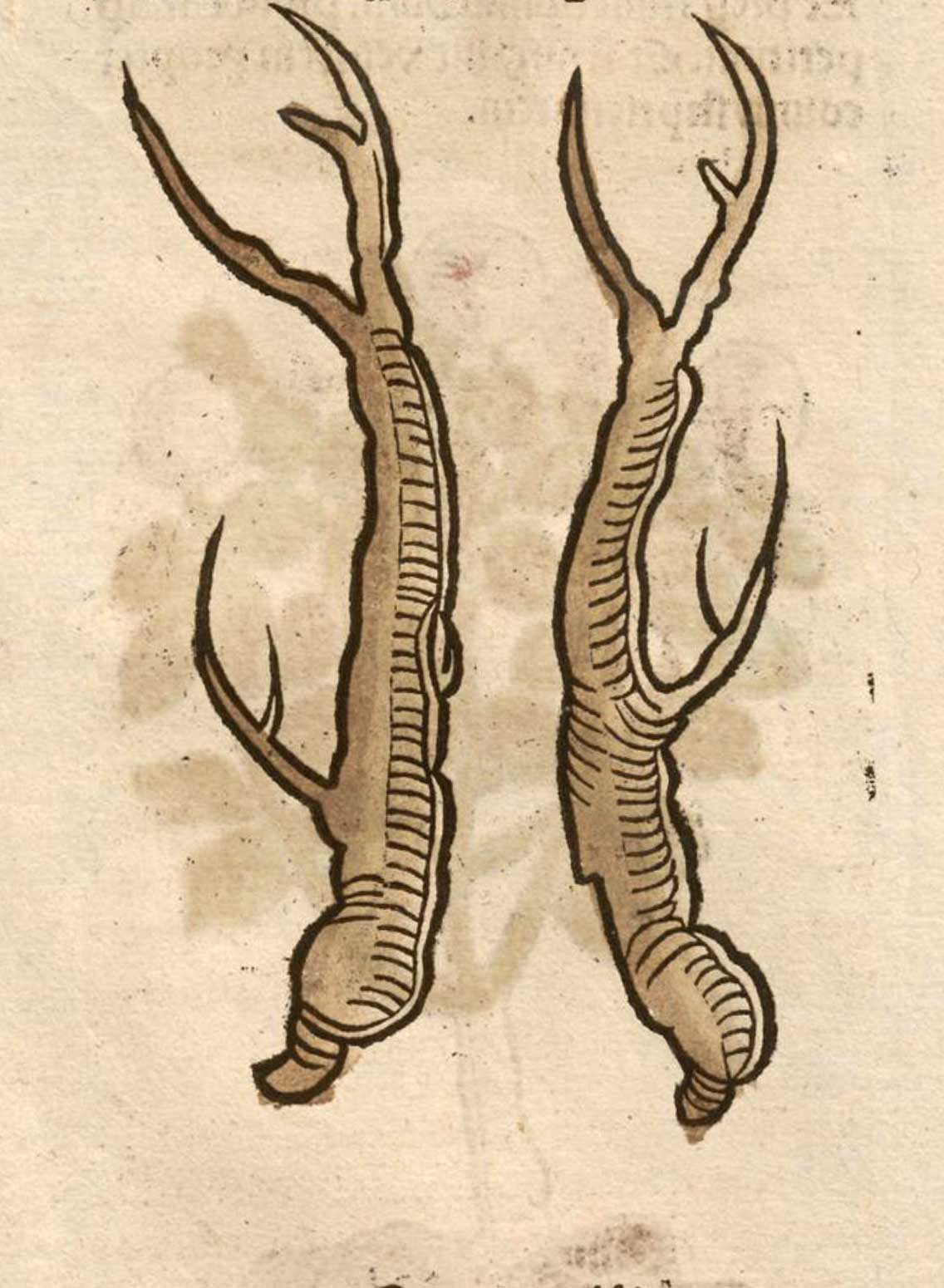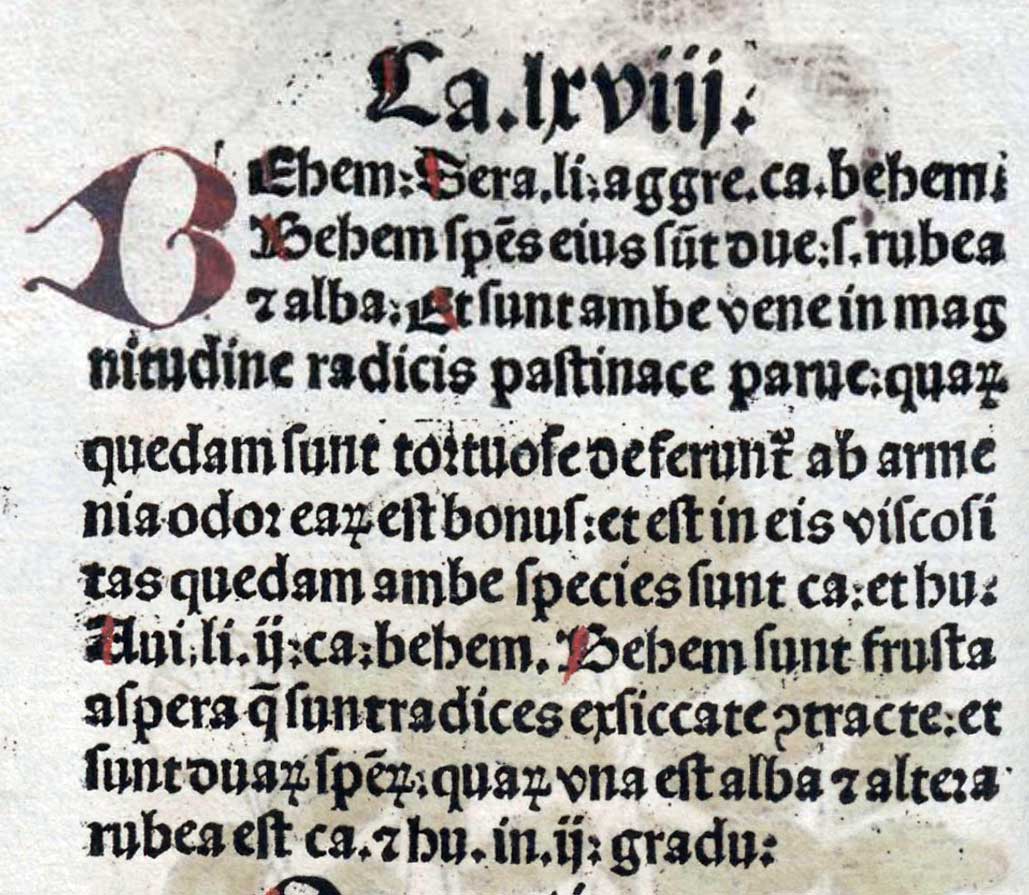Ben, because they resemble acorns, and are unctuous.
Original French: Béen, car ilz ſemblent a gland, & sont vnctueux.
Modern French: Béen, car ilz semblent à gland, & sont unctueux.
Among the plants named for their forms. The plants in this group also appear in Charles Estienne’s De Latinis et Graecis nominibus…[1], published in Paris in 1544, two years before the first edition of the Le Tiers Livre[2].
1. Estienne, Charles (1504–1564), De Latinis et Graecis nominibus arborum, fruticum, herbarum, piscium & avium liber : ex Aristotele, Theophrasto, Dioscoride, Galeno, Nicandro, Athenaeo, Oppiano, Aeliano, Plinio, Hermolao Barbaro, et Joanne Ruellio : cum Gallica eorum nominum appellatione. Paris: 1544. Bibliothèque nationale de France
2. Rabelais, François (1494?–1553), Le Tiers Livre des faictz et dictz Heroïques du noble Pantagruel: composez par M. François Rabelais docteur en Medicine, & Calloïer des Isles Hieres. L’auteur susdict supplie les Lecteurs benevoles, soy reserver a rire au soixante & dixhuytiesme livre. Paris: Chrestien Wechel, 1546. Gallica
Notes
Behem
Behem (text)
Moringa oleifera Lam.

Moringa oleifera Lam.
vernacular name: horseradish tree
been
Le Duchat notes, “Voiez Avicenne, Canon 2. chap. 85.”
been
Voyez Avicenne, canon II, chap. LXXXV. (L.) — C’est-à-dire gland. Ce qui nous fait croire que béen, en arabe, pourroit bien venir du grec βαλανοζ, qui a la même signification.
been
Been ou ben, mot arabe tiré du Canon d’Avicenne, et encore usité en botanique moderne: le behen blanc est notre Lychnis dioïca, D.C.
D’après Devic (Suppl. du Dict. de Littré) il faut distinguer dans le Ben des Anciens: 1° Le fruit du Morgina oleifera, ou bān des Arabes, dont la semence, ben album des officines, fournit une huile à la parfumerie, 2° les behen blanc et rouge (du persan behem), cités par Rhazi, et qui sont les racines de la Centaurea behen. (Paul Delaunay).
myrobolan
thus myrobalan (a sort of prune, called ben by the Arabs), formed upon the Greek words meaning sweet juice and an acorn. In point of fact, the fruit is oily as the former, and it looks like the latter.
béen
Mot arabe tiré du Canon d’Avicenne. Voir Pantagruel, xiv, p. 266 et n. 3 pour les myrobolans.
ben
ben. Also benn, behen. [adopted from Arabic ban, `the ben-tree’ (Lane). The form behen is due to confusion with another word.]
The winged seed of the Horse-radish tree (Moringa pterygosperma); also called ben-nut.
1559 Evony Morwyng, translator The treasure of Evonymus 239 The fruites of Ben… are found about Gonna plenteously.
1601 Philemon Holland, translator Pliny’s History of the world, commonly called the Natural historie I. 374 The Egyptian Ben is more oleous and fat.
1769 Sir J. Hill Fam. Herbal (1812) 33 Ben-Nut-Tree… an Arabian tree.
1783 Ainsworth Lat. Dict. (Morell) ii, Myrobalanum… myrobalan, Ben, or a fruit of Ægypt, about the bigness of a filberd.
oil of ben: oil obtained from the ben-nut.
1594 Sir Hugh Plat The jewell house of art and nature ii. 16 The oile of Benn… is made of the Italian nuts.

